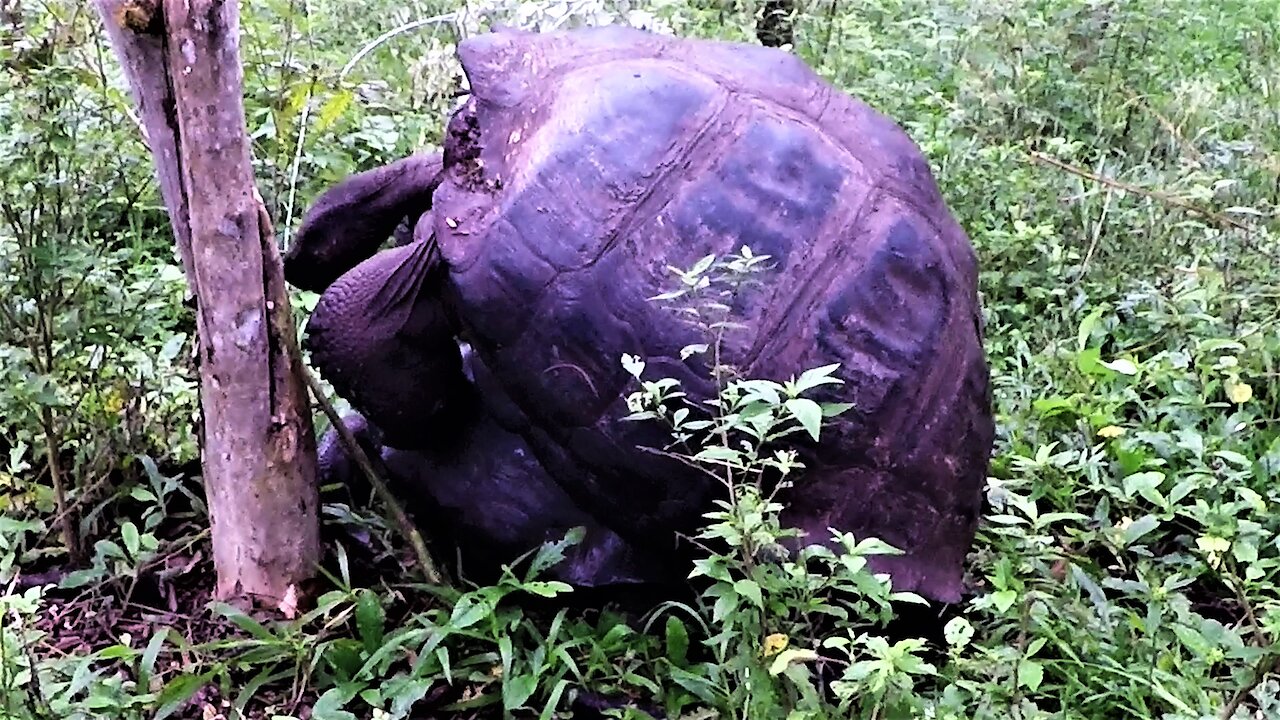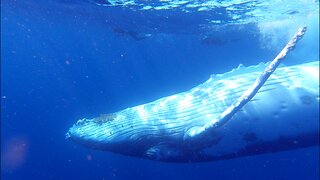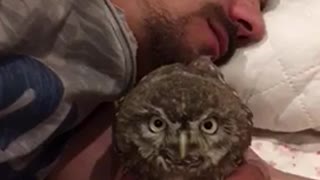Premium Only Content

Giant Tortoises knock over tree with their enthusiasm
Giant Galapagos tortoises are one of the world's most iconic animals. They are descended from giant tortoises in Africa, yet they have adapted to life in their hostile environment on the Galapagos Islands in Ecuador. Due to the long periods of drought, vegetation can be scarce and these animals have developed longer necks, and specially shaped shells that allow the extension of their necks to reach higher foliage in the shrubbery. This allows them to get at food that they could not normally access.
It was adaptions like these in the animals and birds of the Galapagos that led Charles Darwin to make the conclusions that he did, ultimately shaping his theory of evolution. This theory changed the way we look at our world, and at ourselves. Until this time, we did not realize that animals and humans had been changing over time.
These wild tortoises were discovered deep in the woods of Santa Cruz Island. This wildlife videographer heard the loud grunting noises and followed them to witness a very rare sight. A large male, weighing approximately 200kg (440lbs) was mating with a smaller female. They were so focused on their amorous encounter that he was able to quietly walk right up and observe them without disturbing them at all. Tortoise populations are recovering now, but their numbers had dwindled so drastically that very intense breeding and rehab programs were needed to bring them back from the brink of extinction. It was crucial to not disturb a mating pair.
Not only were these tortoises unaware that they were being observed, but they were so consumed with passion that they actually knocked down a small tree with their enthusiasm. As they carried on, the tree fell beside them, yet still they continued as if nothing had happened.
Male tortoises commonly mount the females for 15 to 20 minutes before their coupling is complete. While thrusting, the male makes loud vocalizations that can be heard for more than a mile. The female has the capability of storing sperm for as long as four years after copulation before she allows her eggs to be fertilized. She will carry the eggs for three to six weeks after fertilization, making a long trek to the coast to lay the eggs. These tortoises reach sexual maturity after 15 to 20 years.
Due to low survival rates, and heavy predation by rats, birds of prey, and wild dogs, only the longevity of the tortoises helps them overcome the odds. Giant tortoises can live as long as 200 years and can have many breeding seasons in their lifespan. This means that some of the tortoises we see today might have actually been alive back in 1835 when Charles Darwin made his famous voyage on the HMS Beagle to the Galapagos Islands to study the animals and plants.
These beautiful animals are now common sights on several islands in the Galapagos. They wander freely and they can also be found in several of the breeding centres where tourists are able to see them close up.
-
 3:24
3:24
WildCreatures
6 days ago $0.80 earnedHumpback whale plays with delighted swimmers in Tonga
2.66K7 -
 1:04
1:04
FriesdaleFarms
5 years agoPlayful foals having fun with giant toy ball
7.04K1 -
 0:23
0:23
axel12
5 years ago $5.53 earnedSweet baby owls nap with their owner
40.9K3 -
 0:33
0:33
Nanageorge
5 years ago $1.42 earnedMastiffs play with their piggy best friend
12.1K1 -
 2:38
2:38
ViralHog
6 years ago $0.05 earnedBirds Chatting with Their Own Reflection
30 -
 0:04
0:04
SubwayCreatures
6 years agoGiant lizard on shoulder of a man with long hair
18 -
 0:05
0:05
SubwayCreatures
6 years agoMan in camouflage with giant lizard on his shoulder
28 -
 0:17
0:17
ViralHog
5 years ago $4.81 earnedAdorable Ducks Change Their Mind
25.4K2 -
 0:13
0:13
jgardiner25
6 years ago $1.92 earnedCommon degu plays with Christmas tree ornament
2.18K -
 1:50
1:50
MaxandKatietheGreatDanes
5 years ago $12.72 earnedGreat Danes reluctantly model their holiday hats
5.97K1